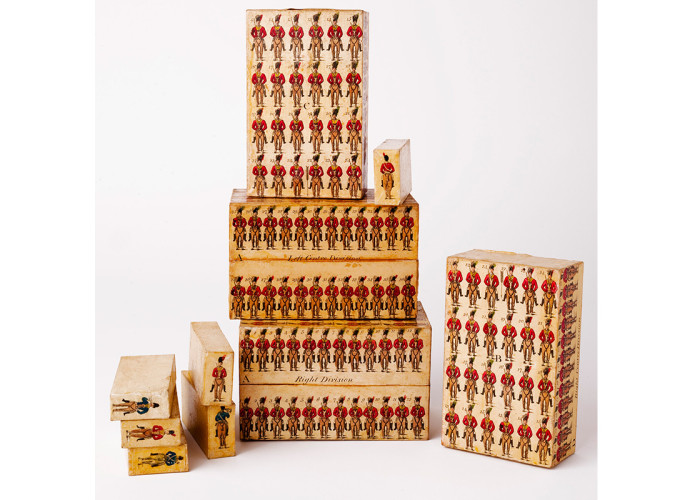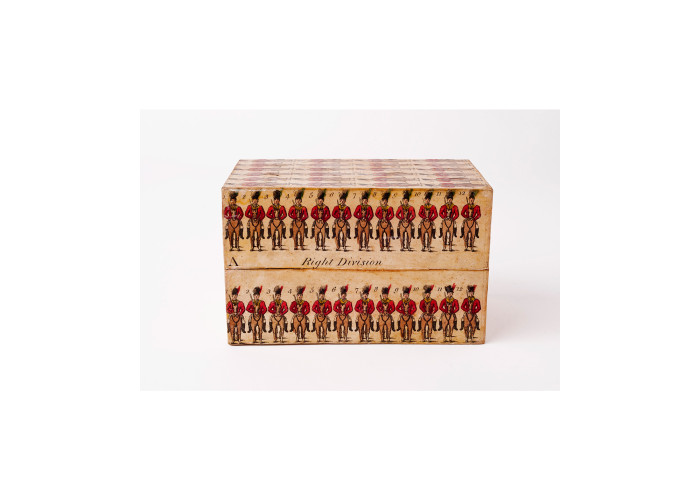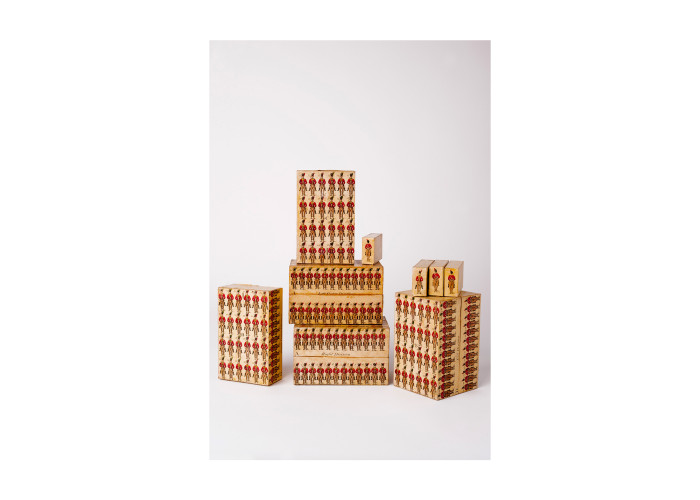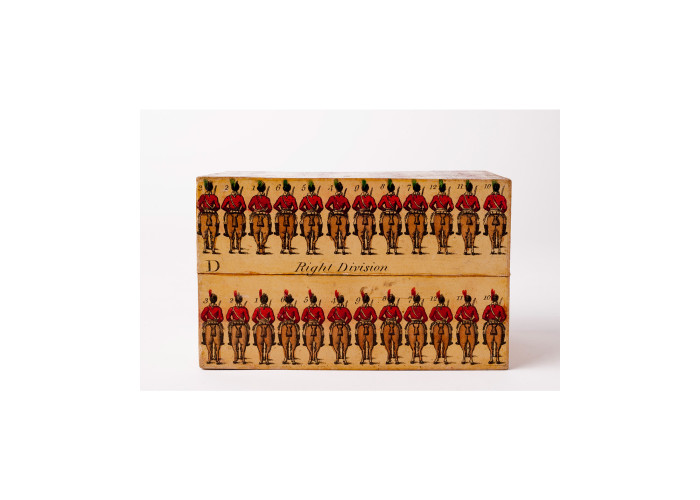Wooden Blocks for Practising Cavalry Drill
These wooden blocks are painted with small figures of cavalry, soldiers mounted on horseback. These are not toys, but were used to educate and instruct officers and soldiers in how to move around as a single group.
Drill was a crucial aspect of warfare at this period. If an army was ‘well drilled’ it could move to and fight in a cohesive manner which would defeat a more disorganised enemy. Repeated drill practice created a sense of discipline and comradeship, meaning that soldiers would move and act as one rather than as individuals.
In an age where the outcome of battle was often decided by whose nerve would break first in the face of the enemy, discipline played a pivotal role. These blocks, therefore, allowed instructors to explain how drill movements worked before putting them into practice in training and ultimately when under enemy fire on active service.
Soldiers from the London and Westminster Light Horse Volunteers are depicted on the blocks. This unit was initially raised in 1779 but then disbanded in 1783. It was reformed in 1794 when war broke out with Revolutionary France, and finally disbanded in 1829.
The volunteer movement was popular in Britain at this time and often consisted of wealthy men, in this case from London. They formed local units which would defend the county in the case of invasion, or to help enforce law and order in rebellious areas. These men would often pay for their own uniforms, equipment and horses.
-
Curatorial info
- Originating Museum: National Army Museum
- Accession Number: NAM. 1976-11-60
- Production Date: 1803
- Material: Wood, painted paper, glue
- Creation Place: London
- Size: Height 85 mm x width 550 mm x depth 85 mm
-
Use this image
You can download and use the high resolution image under a Creative Commons licence, for all non-commercial purposes, provided you attribute the copyright holder.
- Rights Holder: National Army Museum. Photography Relic Imaging Ltd.
- License Type: All Rights Reserved
Find it here
This object is in the collection of National Army Museum














